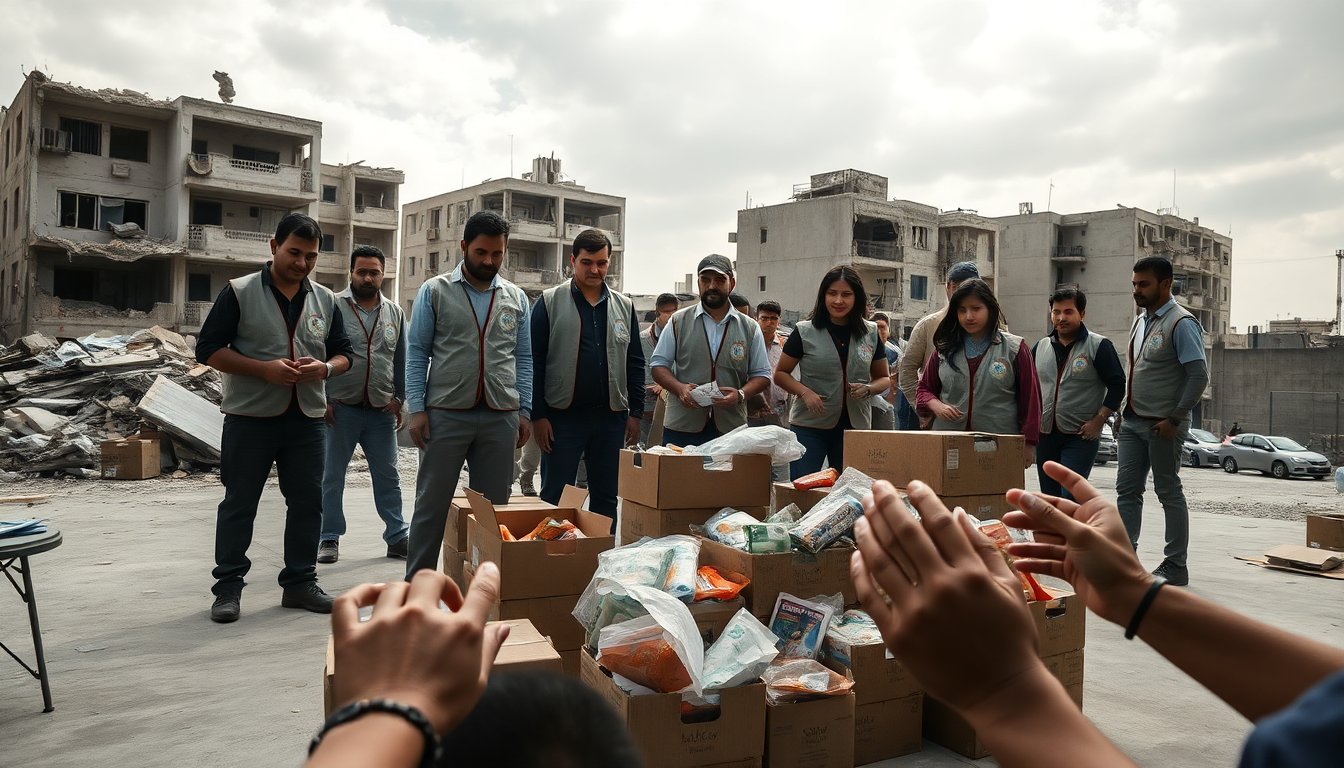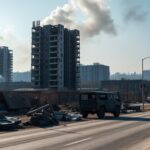Table of Contents
The situation in Gaza has reached a critical juncture as the United States intensifies its involvement in humanitarian efforts amidst a precarious ceasefire. This shift is significant as it reduces Israel’s previously dominant role in controlling the flow of aid into the region.
Observers familiar with the situation suggest that this change could redefine the ongoing humanitarian landscape in Gaza.
As part of this new approach, the U.S. has taken on a more active role, focusing on ensuring that essential supplies reach those in need.
This development is particularly noteworthy given the backdrop of a fragile truce established following a devastating conflict, which has led to substantial loss of life and widespread destruction.
Recent developments in aid exchanges
On a recent Wednesday, Gaza’s largest hospital reported the return of the remains of 15 Palestinians from Israel, reflecting ongoing exchanges stipulated in the ceasefire agreement.
Since the truce came into effect, the International Committee of the Red Cross has facilitated the return of 285 bodies to Gaza, despite challenges in identification due to a lack of available DNA testing kits.
Details of the exchanges
The agreement, brokered by the U.S., includes provisions for the return of hostages and the remains of deceased individuals.
Hamas has returned living hostages in exchange for the remains of Israeli soldiers. However, the exchanges have not been without controversy, as both parties have accused each other of breaching various terms of the agreement.
For instance, Hamas has criticized Israel for allegedly providing partial remains and has raised concerns over the authenticity of certain recovered bodies.
In contrast, Israeli officials have expressed dissatisfaction with Hamas’s compliance, claiming that the organization has failed to adhere to agreed standards.
Challenges in humanitarian aid delivery
The humanitarian situation in Gaza remains dire, as reports indicate that despite the ceasefire, residents continue to face severe shortages of basic necessities.
The Israeli blockade has significantly restricted the availability of gas and other essential resources, forcing many to resort to burning wood and plastic for cooking.
Hamas’s response to accusations
In the midst of these challenges, Hamas has vehemently denied accusations from U.S. Central Command regarding the looting of aid trucks in Gaza. U.S. officials claimed to have evidence from drone footage showing alleged looting by Hamas operatives during aid deliveries. However, Hamas dismissed these assertions as unfounded and suggested they serve as a pretext for further reductions in already limited aid.
Hamas argues that the accusations are politically motivated and fail to acknowledge the humanitarian crisis exacerbated by the blockade. They emphasize that the chaos reported was largely a result of the Israeli military presence in the area, which they claim orchestrated disturbances. Moreover, they highlight the sacrifices made by Palestinian police and security forces in protecting aid convoys and ensuring that assistance reaches the needy.
The future of the ceasefire and aid distribution
Looking ahead, the success of the ceasefire will depend heavily on the adherence of both parties to the terms outlined in the U.S.-brokered agreement. The next steps involve establishing an international stabilization force, which aims to provide oversight and support as humanitarian efforts expand.
UN Secretary-General Antonio Guterres has emphasized the necessity of a legitimate mandate from the Security Council for any such entity to operate effectively in Gaza. The hope is that a stable and peaceful environment can be fostered, allowing for the rebuilding of Gaza and the return of normalcy to its residents.
As part of this new approach, the U.S. has taken on a more active role, focusing on ensuring that essential supplies reach those in need. This development is particularly noteworthy given the backdrop of a fragile truce established following a devastating conflict, which has led to substantial loss of life and widespread destruction.0





